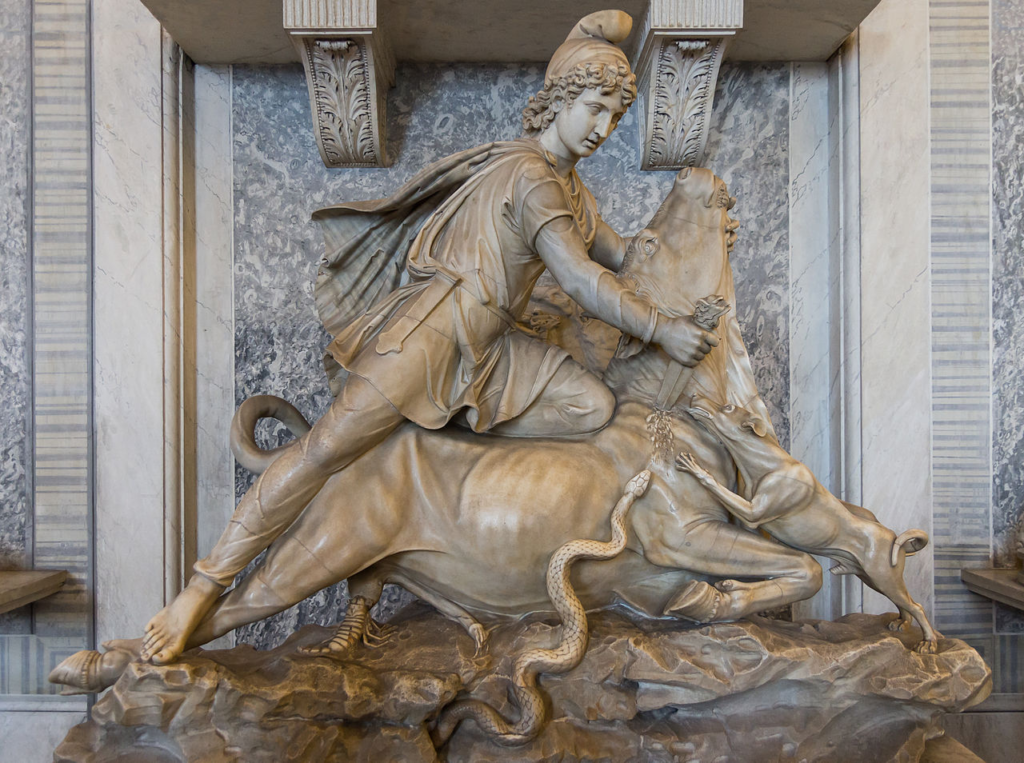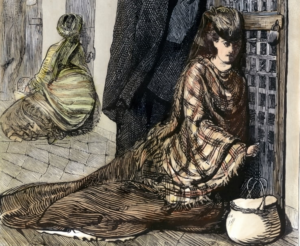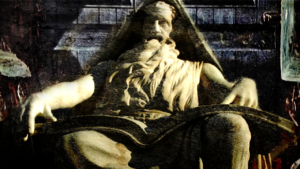The Eigth Gate: The Storming of Heaven
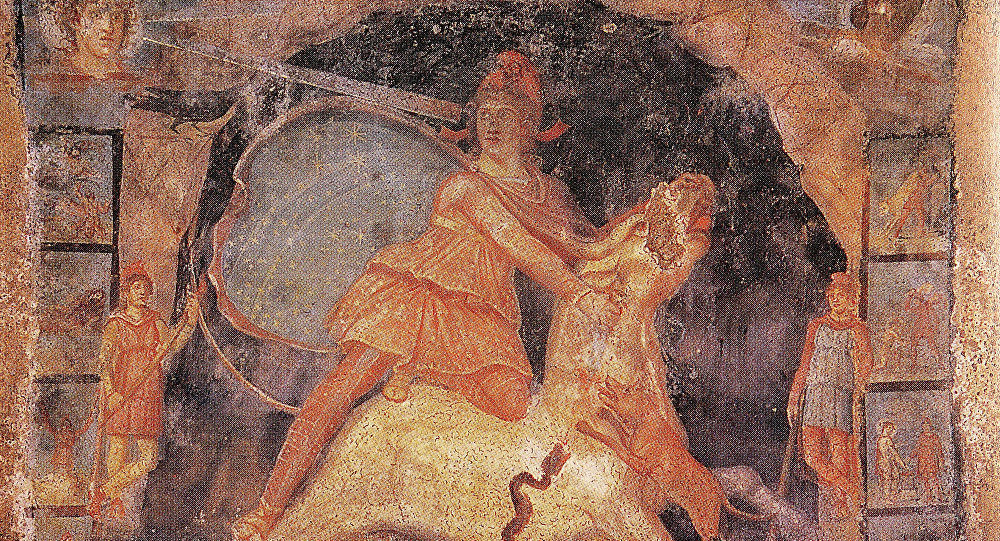
In a tradition at least as old as the ‘Book of Coming Forth By Day’ it was believed by the ancients that at death the soul ascended through the Gate of Man to the planetary spheres, uttering passwords to seven ‘judges’ or ‘authorities’ at each level, until one reached the outer most sphere – that of Saturn – before ascending into the realm of the fixed stars – the hyperuoranian (beyond Saturn, Uranus) pleroma.
‘Beneath it are seven other spheres which revolve in the opposite direction to that of heaven. One of these globes is that light which on earth is called Saturn’s. Next comes the star called Jupiter’s, which brings fortune and health to mankind. Beneath it that star, red and terrible to the dwellings of man, which you assign to Mars. Below it and almost midway of the distance is the Sun, the lord, chief, and ruler of the other lights, the mind and guiding principle of the universe, of such magnitude that he reveals and fills all things with his light. He is accompanied by his companions, as it were – Venus and Mercury in their orbits, and in the lowest sphere revolves the Moon, set on fire by the rays of the Sun. But below the Moon there is nothing except what is mortal and doomed to decay, save only the souls given to the human race by the bounty of the gods, while above the Moon all things are eternal. For the ninth and central sphere, which is the earth, is immovable and the lowest of all, and toward it all ponderable bodies are drawn by their own natural tendency downward.’
– Scipio’s Dream, De Re Publica, Cicero
Evwn in the Visions of Zosimos of Panopolis, a second century alchemist, we see the same imagery:
‘I opened my eyes and said: “I understand it perfectly. These things concern the Waters of Alchemy.” And, again, the one holding the sword said: “You have completed the descent of the seven steps.”
However it is precisely here, in Egypt at this conjunction of neoplatonism, gnosticism, alchemy, Egyptian religion and magic that we see, perhaps, the beginning of something new.
Earlier in his vision Zosimos sees an altar, with fifteen steps leading to it. When the sacrificing priest appears at the altar a mysterious voice proclaims that he has accomplished the descent of the fifteen steps of darkness and the ascent of the steps of light. Throughout the rest of the allegory, Zosimos mentions only seven steps. Zosimos says he wishes to ascend the seven steps and to look upon the seven punishments, which refers to the seven celestial zones ruled by the seven planets. The fifteen steps, then, can be divided into seven descending steps and seven ascending steps.
The remaining step is the Ogdoad, or eighth region: the realm of the fixed stars.
The rediscovery of the phenomenon of axial precession by Hipparchus in the second century BC may have been the catalyst for the introduction of the concept of an Eighth Gate, and that the hypercosmic realm of the fixed stars had its own god, capable of moving the pole, or Axis Mundi, and with it the entire cosmos. Residing in the sphere of the fixed stars and outside the ordered universe literally moving the entire sky and everything in it.
‘But this ability to move the pole demonstrates that Mithras controls the entire cosmic structure and therefore that he possesses a power greater than that of any other divinity, certainly greater than that if the sun who is part of the cosmic structure Mithras controls.This image signified the god’s tremendous power, which enabled him to end the Age of the Bull by moving the entire universe in such a way that the spring equinox moved out of the constellation Taurus the other constellations lying on the celestial equator were then added to show that the god had power not only over the position of the equinoxes but over the position of the entire equator as well.’
-From Ulansey’s ‘Origins of Mithraic Mysteries’
There is a common misconceptiont that Mithras is the sun, but Mithras is not the Sun, he conquered the Sun.
Those things are obscurely hinted at in the accounts of the Persians, and especially in the Mysteries of Mithras, which are celebrated among them. In the latter there is a representation of the two heavenly revolutions: of the movement of the fixed stars and of the planets, and of the passage of the soul through them. The representation is of the following nature. There is a ladder with lofty gates, and on the top of it an eighth gate.
The first gate consists of lead, the second of tin, the third of copper, the fourth of iron, the fifth of a mixture of metals, the sixth of silver, the seventh of gold. The first gate they assign to Kronos, indicating by lead the slowness of this star; the second to Aphrodite, comparing her to the splendour and softness of tin; the third to Zeus, being firm and solid; the fourth to Hermes, for both Hermes and iron are fit to endure all things, and are moneymaking and laborious; the fifth to Ares because, being composed of a mixture of metals, it is varied and unequal;the sixth, of silver, to the Moon; the seventh of gold, to the Sun— thus imitating the colours of the two latter.
In Roman Mithraism it is suggested that Mithras takes on characteristics of Saturn and is considered a time god. In the below image depicting ‘Mithras spinning the Zodiac’, Mithras appears as a ‘hypercosmic’ entity, strengthening this identification with Saturn.
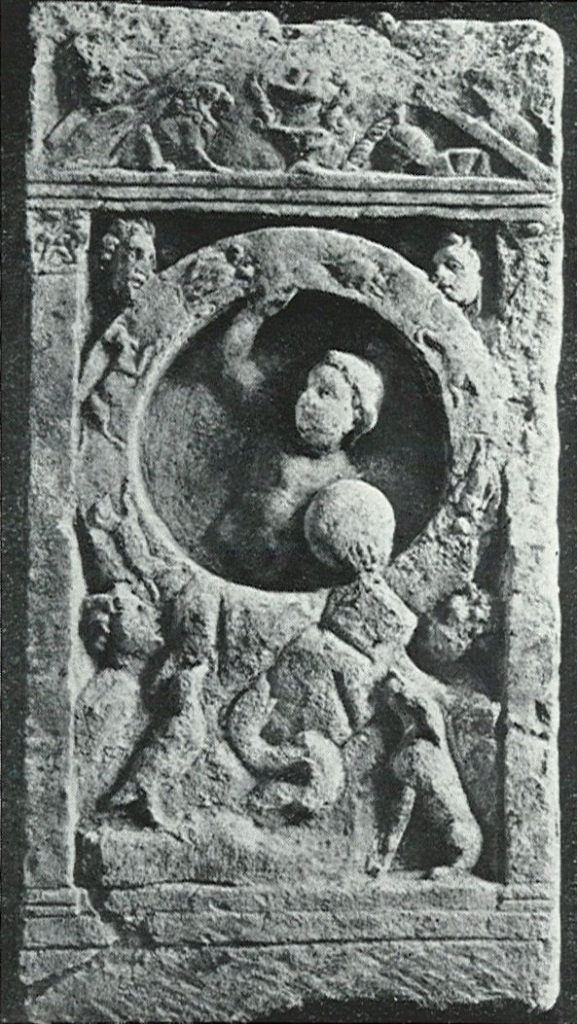
It is no coincidence that the Greek Magical Papyri, the Gnostic texts of Nag Hammadi, and the Roman cult of Mithras all date to the same broad historical period. They all point to the concept of the ‘hypercosmic deity’, that exists outside the Universe, yet is operating the ‘machinery’ via the precession of the equinoxes.
The concept of this ordering reality ‘outside’ ours is hardly new, but it is strangely unpopular with contemporary theorists.
‘The Mithraists were not alone in believing in the existence of ‘two suns’, this concept exists in Platonism, one being the normal astronomical sun and one being the hypercosmic sun located ‘beyond the sphere of the fixed stars.’
-Twyman’s ‘Genuflect’
